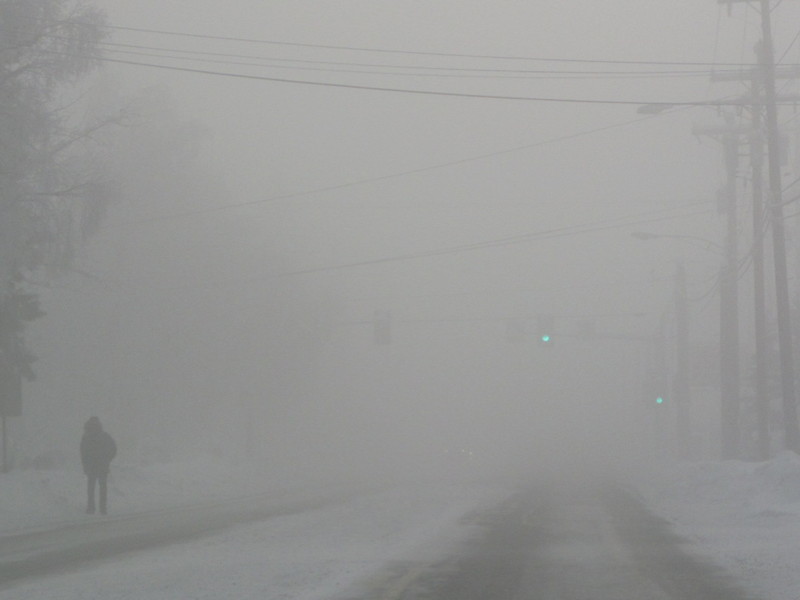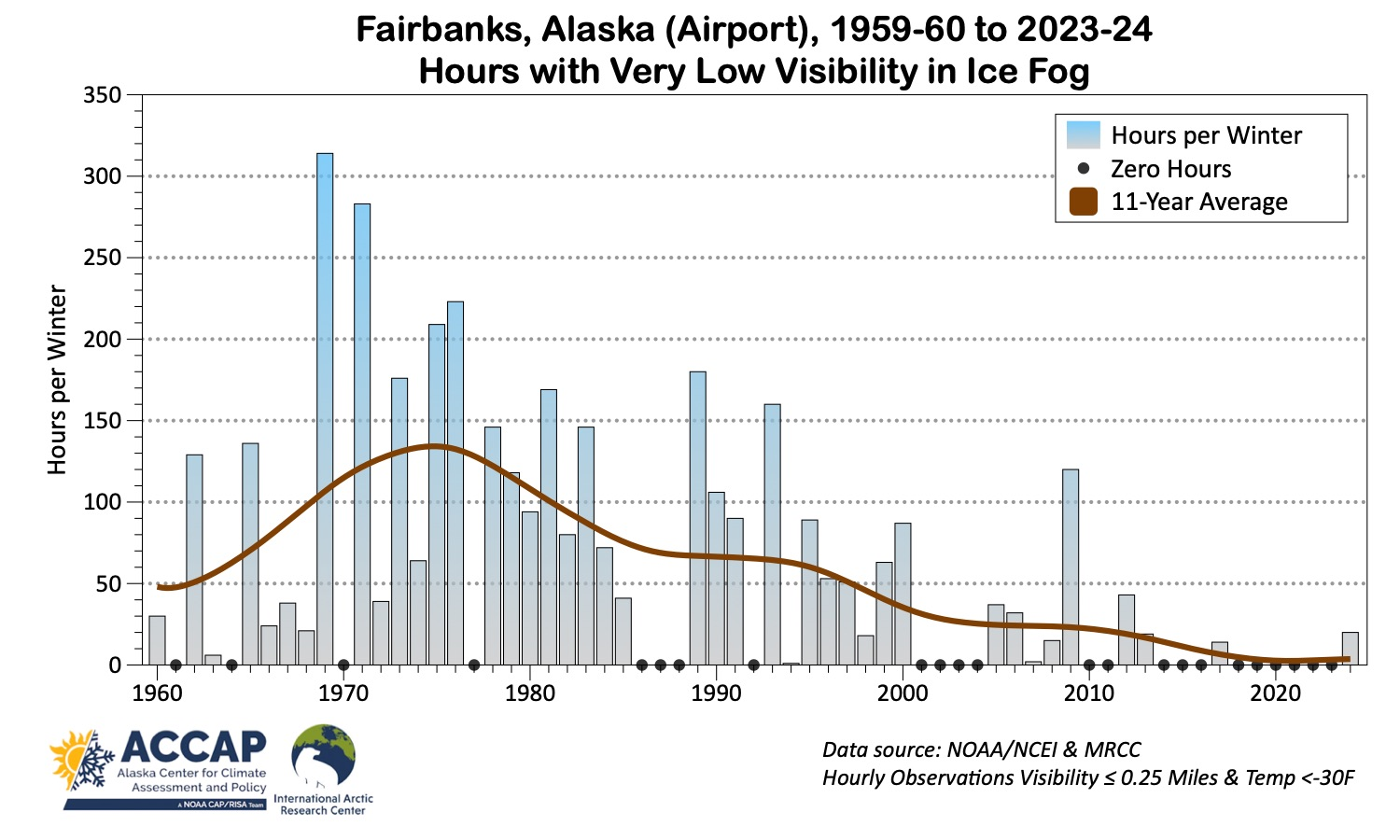Ice fog not often a part of northern life
Ned Rozell
907-474-7468
Feb. 15, 2024

A man walks a Fairbanks street during an ice-fog episode in January 2012.
An old friend — a character not seen in these parts for a few years — showed up last week in Fairbanks.
Ice fog.
Ice fog is a surface cloud composed of water we emit into the air all the time; it only becomes visible when the cold hammer comes down hard and hangs around for a bit.
Last week, when Fairbanks temperatures dipped in places to minus 50 F, there was enough ice fog for Rick Thoman to draw a little blip on a bar graph. Thoman is with the Alaska Center for Climate Assessment and Policy at the University of Alaska Fairbanks. Ice fog showed up on his graph for the first time in about a decade because the air was finally cold enough for long enough.
In the late 1960s through the early 1990s, a glaciologist named Carl Benson slowly chased this phenomenon around Fairbanks and got to know it like no one else.
He wrote a few classic papers back then. In one, he calculated how much water all the sled dogs in Fairbanks exhaled during a typical winter day. (Combined, all 2,000 of them pumped a half ton of water vapor into the air.)

Downtown Fairbanks is blanketed in ice fog beneath the exhaust of a coal-fired power plant in January 2012.
Benson, now an emeritus professor at the Geophysical Institute, described the mystery of ice fog in a 1969 story he wrote for his friends at the California Institute of Technology, where he had attended college.
Ice fog has a magic number — minus 30 F. It does not form until air gets that cold, and it dissipates when the temperature rises above that.
“Ice fog is produced when the water vapor output from urban environments meets an air mass which is too cold to dissolve it and cold enough to crystallize the condensed vapor into tiny air crystals,” Benson wrote back then for the surely baffled urban-California audience.
Those ice crystals waft to the ground, latching onto air-pollution particles on the way down.
Benson also explained a chemical-reaction oddity that happens as we drive. When our engines burn gasoline, “the actual mass of water ejected as vapor from the exhaust is 1.3 times greater than the mass of gasoline burned.”
Though cars trailing their own cotton-candy clouds is a striking visual and is the main cause of limited driving visibility, Benson found that a major contributor of water vapor in the late 1960s was the liquid cooling water for power plants. Today, a major contributor is an open portion of the Chena River warmed by power-plant cooling water.

This graphic shows how a January/early February 2024 cold snap in Fairbanks measured up against the past in its production of ice fog, which forms at about minus 30 F.
In a paper published in fall 2023, Lea Hartl of the Alaska Climate Research Center wrote that from 1950 to 1980 Fairbanks averaged more than two weeks’ worth of days with ice fog each year.
When she examined the 30 years from 1990 to 2020, she found that ice fog was in place for only about 6 days each year, on average.
Why? Hartl wrote that the main reason is that — even though we get a taste of ice fog now and then — there are much fewer days in which Fairbanks experiences temperatures below that magic minus 30 F.
* * *
As temperatures warmed enough here in mid-February to make our water vapor invisible again, I saw a robin on the UAF campus. Though robins spend winters along Alaska’s southern coast and on Kodiak Island, they usually migrate south from Interior Alaska in the fall.
This bird, probably the same one reported on the eBird citizen-science site in January and earlier in February, has perhaps survived on the frozen fruits of chokecherry trees like the one in which it was perched when I saw it. Whatever the robin was eating, the bird made it through a few weeks of ice-fog inducing temperatures. Salute!
Since the late 1970s, the University of Alaska Fairbanks' Geophysical Institute has provided this column free in cooperation with the UAF research community. Ned Rozell is a science writer for the Geophysical Institute.



